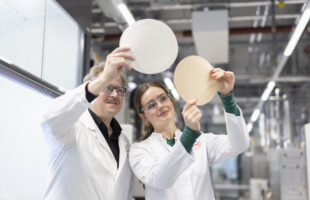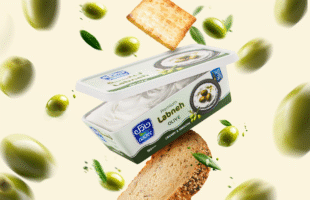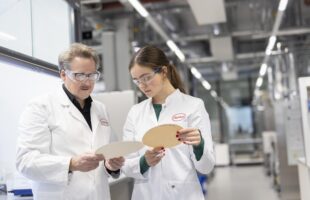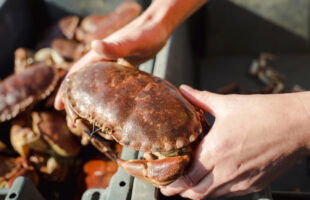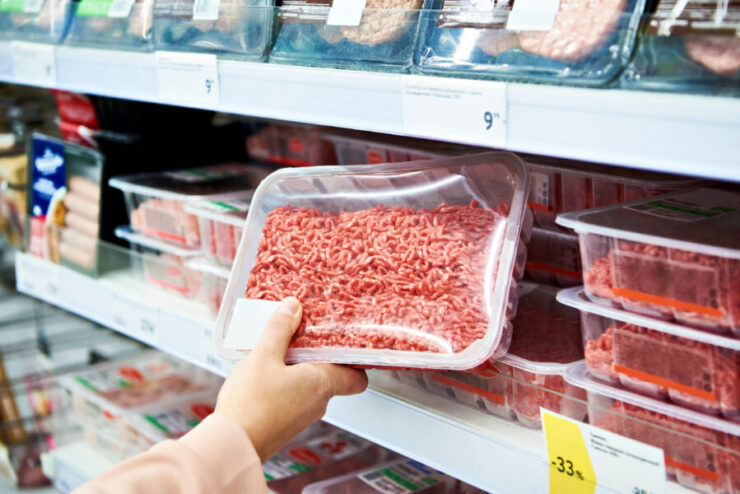
Courtesy of Kuraray
By Dr. Bettina Plaumann, Kuraray Europe, Segment Team Paper & Packaging
Sustainability is the future of food packaging, and the search for ecological alternatives is becoming a key topic in the food sector. Conventional plastic packaging for fresh meat is also under pressure, so a shift to eco-friendly solutions is likely. Several innovative materials already meet the high functional requirements for packaging perishable foods and the demand for recyclability.
Sustainable packaging is a challenge for society as a whole. Alongside consumer expectations and stricter regulatory requirements, this megatrend is driven by the growing awareness of their ecological responsibility among brand owners and converters. Many developments in the packaging sector are relevant to the food sector.
These include using renewable raw materials, reducing the amount of packaging, cutting CO2 emissions, recyclability, repulpability, and biodegradability. The situation is made more complex for food packaging by national and regional differences, resulting from heterogeneous packaging preferences and the varying maturity of regulations and recycling infrastructure. Even so, across regional and national boundaries, the efforts undertaken share a common goal: a circular economy for packaging.
The challenge: combining recyclability with reliable protection and appealing presentation
Special attention is paid to alternative packaging options for perishable products such as fresh meat. Conventional solutions, such as shrink film, are frequently based on chlorinated plastics such as polyvinylidene chloride (PVDC). Although these prevent meat from going off quickly, it is not yet possible to recycle them. Another disadvantage of PVDC is its tendency to yellowish discolouration, which reduces consumers’ perception of the quality of the meat at the point of sale.
The following six innovations for fresh meat link sustainability and functionality. They offer a wide range of environmentally friendly packaging ideas, which also suit different regional requirements.
1. Packaging concept: MAP tray with gas barrier made of ethylene vinyl alcohol copolymers (EVOH)
Possible structure for this type of packaging: Polypropylene / EVAL™ EVOH / polypropylene
The basic requirement for this packaging concept, where protective gases replace ambient oxygen, is that the packaging material has a high gas barrier. In the past, multilayer modified atmosphere packaging (MAP) trays were generally made of polyethyleneterephtalate (PET)/EVOH/PE. This combination is not recyclable with today’s methods.
Thanks to ethylene vinyl alcohol copolymers (EVOH), it is now possible to produce more sustainable MAP trays with multilayer structures that can be recycled without difficulty in the mixed polyolefine recycling stream.
To illustrate the excellent gas barrier of EVOH: 1mm of EVALTM developed by Kuraray has a gas barrier equivalent to a ten-metre-thick PE wall. Polypropylene (PP) can create a water barrier and has better cold impact resistance. The production process comprises cast film coextrusion at very low temperatures in combination with the water quenching or chill roll quenching method. Material qualities ranging from superclear to white can be produced, depending on the temperature.
2. Packaging concept: Shrink bag made using supertransparent ethylene vinyl alcohol copolymers (EVOH) as a gas barrier
Possible structure for this type of packaging: Polyethylene / EVAL™ EVOH SC series/polyethylene
Stretchability and shrinkability play a key role in the production of shrink-wrap bags. Alternatives to polyvinylidene chloride (PVDC), commonly used in the past, are advanced EVOH grades such as the EVALTM SC series from Kuraray. This recyclable polymer combines the excellent gas barrier properties of EVOH with the shrink film’s stretchability and shrinkability performance.
Moreover, as well as being more eco-friendly, EVOH-based shrink film is supertransparent, whereas conventional PVDC products tend to have a yellowish tint. Polyethylene layers are applied to both sides of the EVAL™ SC film on a triple-bubble blown film line to create a barrier to water.
3. Packaging concept: Lidding film made with a gas barrier from ethylene vinyl alcohol copolymers (EVOH) for vacuum skin packaging
Possible structure for this type of packaging: Polyester ionomer / EVAL™ EVOH AP series/polyester ionomer
In this packaging concept, materials with exceptionally high impermeability to gas are used to increase the shelf-life of vacuum-packed meat. Functional EVOH types such as the EVALTM AP series from Kuraray maximise impermeability to gas by incorporating a proprietary oxygen absorption agent and are also recyclable. Applying polyester ionomers to the outer side as a water barrier creates an aesthetically appealing transparent film, ideal for lidding films for vacuum skin packaging. This sustainable film is produced using the established triple-bubble process.
4. Packaging concept: Cardboard tray for vacuum skin packaging with a coating based on ethylene vinyl alcohol copolymers (EVOH)
Possible structure for this type of packaging: Cardboard / PE-covered EVAL™ EVOH film
As well as the lidding film, vacuum skin packaging for fresh meat requires a tray. This can be produced from sustainable cardboard with minimal use of plastic film as a barrier layer. For this packaging concept, Kuraray’s customers developed a transparent film based on EVALTM EVOH, which acts as a gas barrier and is covered in layers of polyethylene as a barrier to water. Benefit: the PE/EVOH/PE can be applied at a very thin layer thickness, which enables it to meet the requirements for fibre content of the packaging for recyclability. In the recycling process, these trays have very good layer separation and simple repulpability. They are produced using the laminating process.
5. Packaging concept: Skin packaging with biopolymers
Possible structures for this type of packaging: Polyethylene terephthalate / PLANTIC™ / polyethylene terephthalate or polyethylene
Renewable biopolymers are an attractive alternative for packaging because they are produced from sustainable materials and are easy to recycle. Kuraray makes it possible to develop ecological multilayer concepts for skin packaging using PLANTICTM – a biodegradable starch-based biopolymer. PLANTIC™ has excellent gas barrier properties and is dispersible in water.
Therefore, the skin layers can be separated in the washing process of the standard PET recycling process. These skin layers can be produced by applying polyethylene terephthalate (PET) or polyethylene (PE) as a sealing layer by dry lamination and extrusion coating. Skin packaging produced from biopolymers is not only eco-friendly; it also keeps meat fresh for long periods and allows appealing, high-end presentation of the products.
6. Packaging concept: MAP tray made from biopolymers
Possible structures for this type of packaging: Polyethylene terephthalate / PLANTIC™ / polyethylene terephthalate or polyethylene
So far, MAP trays that provide sustainable packaging for fresh meat have often been produced using non-recyclable multilayer structures with layers of PET and PE coated with an ethylene vinyl alcohol (EVOH) copolymer as an oxygen barrier.
Due to its recyclability, the PLANTICTM biopolymer from Kuraray is a sustainable alternative for multilayer MAP trays. Since PLANTICTM is dispersible in water, the outer sealing and barrier layers made of polyethylene terephthalate (PET) or polyethylene (PE) can easily be separated from the biopolymer in the recycling process.
Another benefit: PLANTIC™ has a unique fingerprint in the near-IR range, allowing effective sorting in waste separation systems. These sustainable multilayer trays are produced by dry lamination and extrusion coating.
Conclusion: It is possible to combine functionality with sustainability in packaging – even for perishable food.
These examples demonstrate that it is possible to meet the high functional requirements for packaging fresh meat and, at the same time, increase sustainability. While it is impossible to altogether avoid the use of plastics in packaging for perishable food products, innovative material concepts now offer a wide range of environmentally friendly solutions that minimise plastics and focus on recyclability and compostability.
Learn more about the wide range of high-performance materials that improve the sustainability and functionality of packaging.
About the author:
Dr. Bettina Plaumann studied pharmacy and subsequently held various positions in marketing communications in the pharmaceutical/chemical sector before joining Kuraray as Head of KEG Communications & Marketing in 2015. Since 2020, she has led the Kuraray Segment Marketing Team Paper & Packaging.



